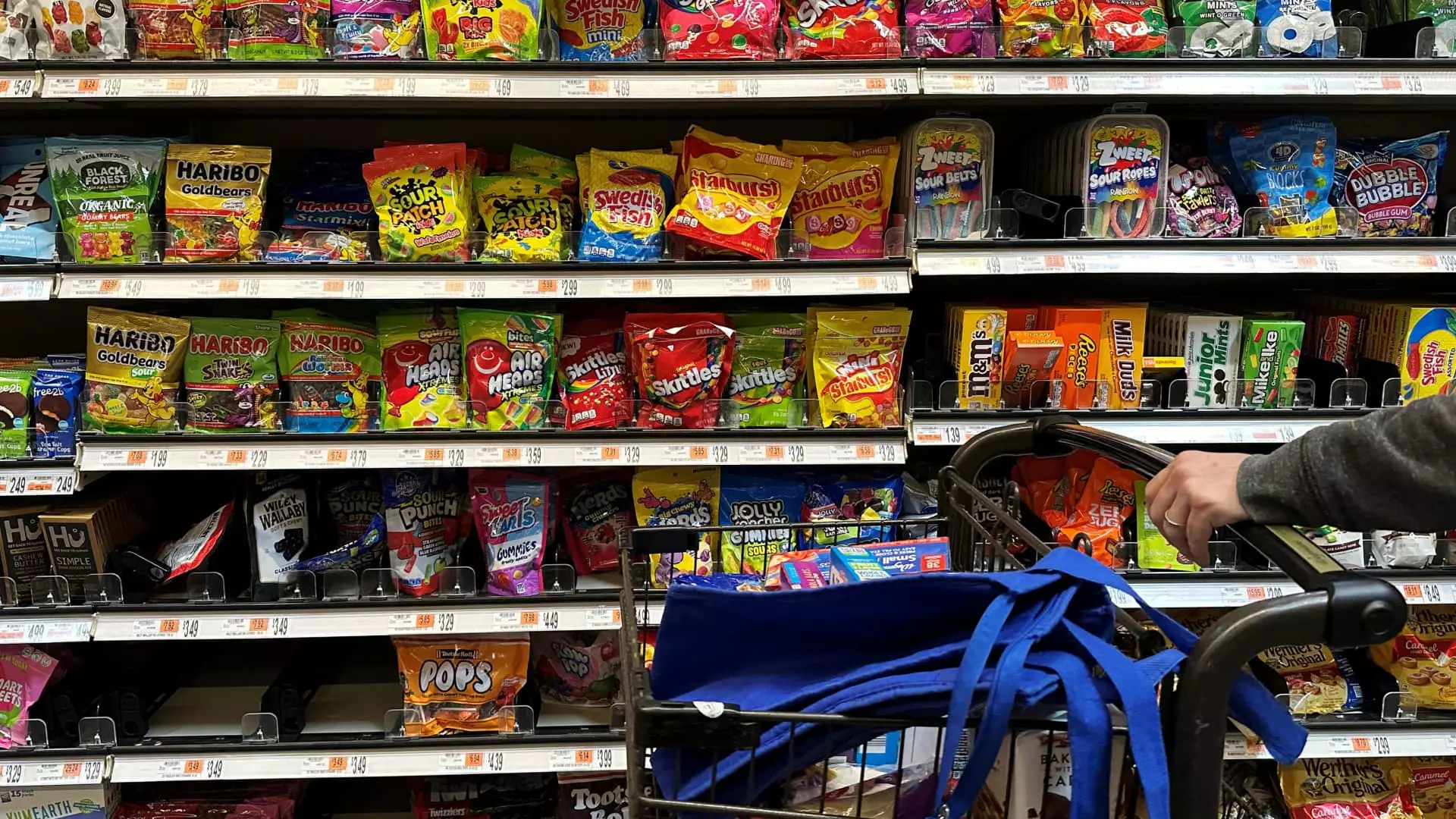The vibrant colors of childhood snacks and beverages—think of the fluorescent red of Flamin’ Hot Cheetos, the dazzling teal of Mountain Dew Baja Blast, and the colorful allure of Skittles—may soon lose their sparkle. The Food and Drug Administration (FDA) has announced a significant shift: by the end of next year, the agency will phase out the use of petroleum-based synthetic dyes in our food products. The agency’s commissioner, Marty Makary, emphasized the urgent need for change, stating that American children have been “living in a toxic soup of synthetic chemicals” for far too long. But what is driving this controversial decision, and what does it mean for consumers and corporations alike?
The Chemical Reality of Food Coloring
For decades, bright hues have not only made our food aesthetically pleasing but have also influenced shopper behavior. Bright reds and yellows have been powerful market manipulators, turning simple snack items into irresistible purchases. The backlash against these synthetic colorants, however, has been brewing for over a decade and seems to be reaching a boiling point. Critics, including prominent health advocates, argue that the science surrounding artificial colors suggests potential links to hyperactivity and other health issues in children. The recent FDA pronouncement raises questions about the ethical responsibility of companies that have, until now, prioritized profit over public health.
While some companies maintain that evidence regarding the dangers of synthetic dyes is inconclusive, the FDA’s current stance signals a fundamental shift in how we perceive food safety. Implementing a national standard to eliminate petroleum-based dyes aligns with a growing demand for transparency in food production. It’s not merely about colors; it’s about trust—trust that the food we consume is safe for our families.
The Business Implications
This move inevitably raises challenges for food giants such as PepsiCo, General Mills, and Mars. Transitioning from synthetic dyes to natural alternatives heralds a potential upheaval in recipes and production processes. Natural dyes can indeed enhance food color; however, they often come with increased costs and can present consistency challenges. The dynamics of consumer perception may also shift; will customers find new colors appealing, or will they reject them in favor of familiar, albeit toxic, hues?
Despite assurances from Makary that food prices won’t rise as a result of these changes, skeptics remain. A balanced approach could serve as a foundation for future industry practices, encouraging companies to innovate rather than resist change. History has shown us that consumer preferences are fickle, and once a successful formula has been engineered—like Kraft Heinz altering its mac and cheese recipe to remove artificial dyes—regressions can be disastrous.
This upheaval evokes memories of General Mills’ struggles with Trix cereal, which reverted to its artificial colors after initial consumer rejection of the more natural alternatives. Companies will need to be prepared for similar pushback as they attempt to cultivate new formulas that meet both health and market demands.
Health vs. Corporate Interest
The FDA’s initiative is positioned as a heroic step toward better nutrition for American children. However, there is a significant question mark surrounding the FDA’s ability—and willingness—to hold the food industry accountable. As Health Secretary Robert F. Kennedy Jr. notes, there is merely an “understanding” with food companies, rather than a concrete enforcement mechanism. The effectiveness of this program may heavily rely on the industry’s goodwill, which has not always been reliable in past situations.
In the broader context, Kennedy’s leadership and the FDA’s actions may reflect a key ideological battle. Contemplating the intersection of food, health, and politics prompts one to question how government policies can influence corporate behavior. The ongoing relationship between pharmaceutical, food, and regulatory sectors remains fraught and is often characterized by a lack of mutual trust. How well can the FDA navigate the complex interests and potential resistance from powerful stakeholders?
Addressing Existing Disparities
While the push to eliminate synthetic dyes can be viewed as progressive, the urgency with which it is being pursued raises eyebrows. It is important to evaluate whether such measures can genuinely help tackle deeper systemic issues impacting public health. The ban on synthetic dyes may not herald a panacea for the chronic health crisis facing the United States, especially as the reliance on food products laden with sugar and unhealthy additives persists.
Kennedy’s administration has placed a strong emphasis on making nutritious food the cornerstone of health improvement efforts. However, the challenge lies in navigating food deserts and socioeconomic disparities that influence nutritional access across communities. Banning synthetic dyes might lead to improved options for some, but these changes must be balanced with broader policy reforms aimed at ensuring equitable access to nutritious foods.
In the end, the FDA’s actions may lead to a fragmented political landscape, pushing for reforms that dwell on the surface while deeper roots of public health continue to thrive unchecked. How policymakers respond to the myriad layers of this issue will ultimately shape the future of American food—colorful or not.

